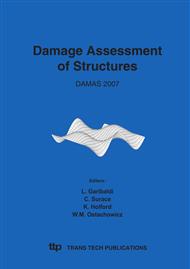p.297
p.305
p.311
p.317
p.323
p.331
p.339
p.345
p.351
Comparison of RBF Neural Network and Support Vector Machine on Aero-Engine Vibration Fault Diagnosis
Abstract:
RBF neural network and support vector machine (SVM), two Artificial Intelligent (AI) methods, have been extensively applied on machinery fault diagnosis. Aero-engine, as one kind of rotating machine with complex structure and high rotating speed, has complicated vibration faults. As one kind of AI methods, RBF neural network has the advantages of fast learning, high accuracy and strong self-adapting ability. Support vector machine, another AI method, only needs a small quantity of fault data samples to train the classifier and does not need to extract signal features. In this paper, the applications of two AI methods on aero-engine vibration fault diagnosis are introduced. Firstly, the principles and algorithm of both two methods are presented. Secondly the fundamentals of two-shaft aero-engine vibration fault diagnosis are described and gotten the standard fault samples (training samples) and simulation samples (testing samples). Third, two AI methods are applied to the vibration fault diagnosis and obtained the diagnostic results. Finally, the advantages and disadvantages of the two methods are compared such as the computing speed, accuracy of diagnosis and complexity of algorithm, and given a suggestion of selecting the diagnostic methods.
Info:
Periodical:
Pages:
323-328
Citation:
Online since:
September 2007
Authors:
Price:
Сopyright:
© 2007 Trans Tech Publications Ltd. All Rights Reserved
Share:
Citation:


